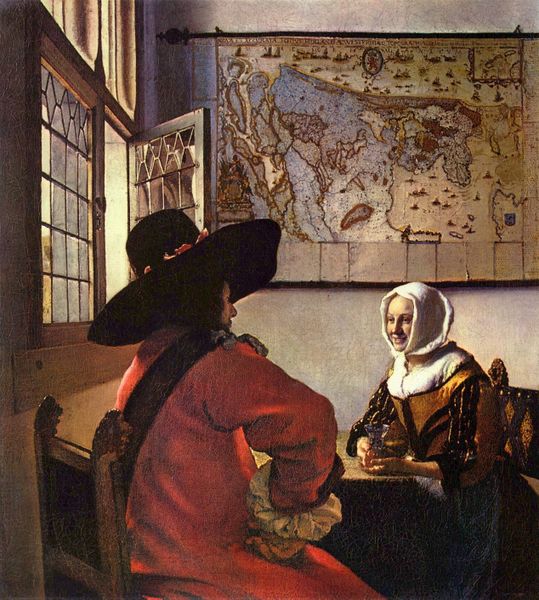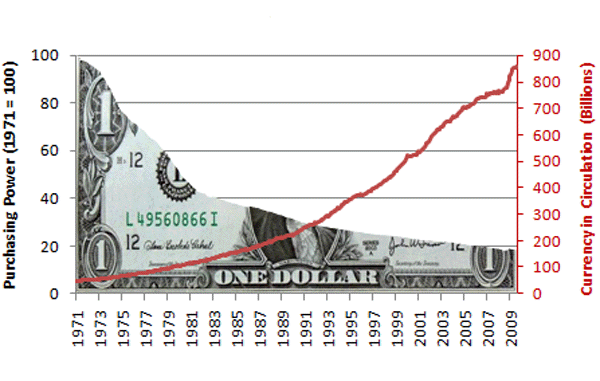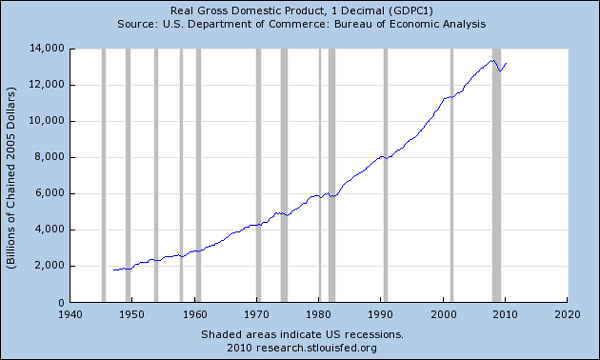Economics can be considered to be bastard- step child of auto of mechanics, its precepts found somewhere between differentials and fuel pumps. As with transmissions. one part’s actions effects other parts in a predictable way. This is a reason why economists avoid values like poison, because changing values in economic models as in transmissions produces unpredictable results.
Grind, grind, grind …
Poisons … er, values are subjective. One person’s trash is another’s treasure. Value is embedded in culture. Ours is a self- generated culture that emerges from its own anus as either innovations, or clichés. These are in turn subject to self- generated commercial measurements. How can we lose when the starting points of our culture are all zeroes and we all get head starts?
Or rather, howcum we are losing? We are constantly cheating! We are never supposed to lose. And yet …
Because our culture is ironic, economic values attached to the results remain elusive. We ‘value’ certain things about ourselves even though we really cannot pin down why. Instead of values, economists use ‘worth’ measuring fund- or money flows. They dress up the narrative – which is what worth really is – as a hard science rather than attempting to count how many angels can actually dance on an atom of nitrogen.
Meanwhile, back at the ranch, the relationship between ‘worth’ and ‘value’ is at the center of our current malaise. What is value and how much is it worth? Who knows?
Since nobody knows, since nobody trusts anyone – over or under 30 – and worth is changeable, our economic culture swoons while the ‘experts’ wring their hands.
The gear- bone is connected to the axle- bone. Let’s leave it at that!
Here is an idea that has been circulated around the finance blogosphere @ Naked Capitalism and elsewhere is from Wynne Godley which states that every financial asset is also some entity’s liability!
This approach can be called accounting entity economics, Modern Monetary Theory or Chartalism. Let’s assume here that values are fixed. Here’s Steve Randy Waldman:
Rob Parenteau gets sectoral balances right
The “sectoral balances approach” (frequently attributed to Wynne Godley) decomposes financial stocks and flows by virtue of a tautology. Every financial asset is also some entity’s liability. The sum of all financial positions is by definition zero. So we can write:
NET WORLD FINANCIAL POSITION = 0 [0]
Suppose that, quite arbitrarily, we divide the world into a “foreign” and a “domestic” sector. Then we have:NET FOREIGN FINANCIAL POSITION +NET DOMESTIC FINANCIAL POSITION =NET WORLD FINANCIAL POSITION = 0 [1]NET FOREIGN FINANCIAL POSITION +NET DOMESTIC FINANCIAL POSITION = 0 [2]Suppose that, again arbitrarily, we decompose the domestic economy into a public and private sector:NET PRIVATE DOMESTIC FINANCIAL POSITION +NET PUBLIC DOMESTIC FINANCIAL POSITION =NET DOMESTIC FINANCIAL POSITION [3]Substituting into our previous expression, we get:NET FOREIGN FINANCIAL POSITION +NET PRIVATE DOMESTIC FINANCIAL POSITION +NET PUBLIC DOMESTIC FINANCIAL POSITION = 0 [4]
We can also write this in terms of changes or flows. Since the sum above must always be zero, it must be true that any changes in one sector are balanced by changes in another:ΔNET FOREIGN FINANCIAL POSITION +ΔNET PRIVATE DOMESTIC FINANCIAL POSITION +ΔNET PUBLIC DOMESTIC FINANCIAL POSITION = 0 [5]Two of the flows in the equation above have conventional names, so we can rewrite:CURRENT ACCOUNT DEFICIT +ΔNET PRIVATE DOMESTIC FINANCIAL POSITION +CONSOLIDATED GOVERNMENT SURPLUS = 0 [6]Rearranging…ΔNET PRIVATE DOMESTIC FINANCIAL POSITION =CURRENT ACCOUNT DEFICIT +/-CONSOLIDATED GOVERNMENT SURPLUS [7]
ΔNET PRIVATE DOMESTIC FINANCIAL POSITION =CURRENT ACCOUNT SURPLUS +/-CONSOLIDATED GOVERNMENT DEFICIT [8]
Etc. One entity matches the other, values are unnecessary!
Here’s Steve Keen taking Godley one step further by integrating sectoral balance sheets with Minsky. Read this article and you can see a mechanism to allow values to shift without pinning down exactly what they are:
(Note: graphics are cut off in narrow browsers and RSS readers.)
Endogenous money creation and economic growth
The two changes to Free Banking model are the addition of row 12 (and its ledger recording in row 13), with the qualitatively new operation of Money Creation being added to the previous operation of Money Transfer; and a “Deus Ex Machina” injection of fiat money into either Bank Equity or Worker Deposit accounts at a after a credit crunch.
Table 7: Endogenous money creation
Row Transaction Type Bank Equity (BE) Bank Transaction (BT) Firm Loan (FL) Firm Deposit (FD) Worker Deposit (WD) 1 Lend Money Money Transfer 2 Record Loan Ledger Entry 3 Compound Debt Ledger Entry 4 Pay Interest Money Transfer 5 Record Payment Ledger Entry 6 Deposit Interest Money Transfer 7 Wages Money Transfer 8 Deposit Interest Money Transfer 9 Consumption Money Transfer 10 Repay Loan Money Transfer 11 Record Repayment Ledger Entry 12 New Money Money Creation 13 Record Loan Ledger Entry 14 Government policy Exogenous injection into either
BE
or
WDSum of Flows
Again, simply to illustrate that the system is viable, a constant growth parameter has the banks doubling the stock of loans every 15 years (see Table 3 on page 18):
You can see how flows of ‘funds’ from one part of a system arrive somewhere else. Professor Keen elaborates on this model by assigning factors and modeling them in turn with equations.
Here’s another item from Marshall Auerback. It might seem out of place in an argument about QE but it really isn’t. Look for the entities:
Auerback on inflation and hyperinflationFrom the fiscal sustainability teach-in of April 2010, Marshall Auerback (along with a great panel in Q&A) discussed the preconditions of hyperinflation within the context of two commonly cited examples, Weimar Germany, of Robert Mugabe’s Zimbabwe, as well as a reference to the collapse of the American Confederate currency in 1865.
The upshot: hyperinflation requires real-world destruction of the ability to either produce a significant amount of goods or procure same through import. Weimar lost the Ruhr valley — which employed 25% of its workforce and created most of its ability to generate foreign exchange — while being asked to pay a colossal war indemnity in gold or foreign exchange. Zimbabwe, similarly, through misguided and corrupt implementation of land reform, destroyed well more than half of its ability to produce food. the Confederacy was invaded and unable to prevent the destruction of most of its production capacity as well as its ability to tax.
Here’s another example from Michael Hudson. He writes a long – and largely correct (as in covering a lot of the same ground that is covered here) article about money, flows- of- funds, savings and central bank manipulation. It deals with value as in money- value relative to other money:
The cover story is that foreign exchange controls and purchases of U.S. securities keep the renminbi’s exchange rate low, artificially spurring its exports. The reality, of course, is that these controls protect China from U.S. banks creating free “keyboard credit” to buy out Chinese companies or load down its economy with loans to be paid off in renminbi whose value will rise against the deficit-ridden dollar. It’s the Wall Street arbitrage opportunity of the century that banks are pressing for, not the welfare of American workers.
The House Ways and Means Committee is demanding that China raise its exchange rate by 20%. This would enable speculators to put down 1% equity – say, $1 million to borrow $99 million and buy Chinese renminbi forward. The revaluation being demanded would produce a 20,000% profit, turning the $100 million bet (and just $1 million “serious money”) into making $2 billion. It also would bankrupt Chinese exporters who had signed dollarized contracts with U.S. retailers.
NOTE: ‘Laundering’ a $1 million into $2 billion is a meager 2,000% profit but who’s counting?
The Internal Revenue Service treats such trading gains as “capital gains” and taxes them at only 15%, much less than the tax rate on earned income that wage-earners must pay. The Brazilian real has risen by about 25 per cent against the dollar since January 2009. Last week, Brazil’s state oil company, Petrobras, issued $67 billion in shares to exploit the nation’s new oil discoveries. Foreigners have been swamping Brazil’s central bank with a reported $1 billion per day for the past two weeks – about 10 times its daily average in recent months – but this was largely to absorb money entering the country to take part in last week’s issue by the national oil company.
This is a compendium of the kind of propaganda Americans are being subjected to these days. There is little acknowledgement that the United States is as guilty of “managing the dollar” by its policy of quantitative easing that depresses the exchange rate below what would be normal for any other economy suffering so gigantic and chronic payments deficits. It is the United States that is out of line with every other economy.
What ties all this together? Let’s go back to the beginning:
The “sectoral balances approach” (frequently attributed to Wynne Godley) decomposes financial stocks and flows by virtue of a tautology. Every financial asset is also some entity’s liability. The sum of all VALUE positions is by definition zero. So we can write:
NET WORLD VALUE POSITION = 0 [0]
NET WORLD VALUE OF COMMERCE +
VALUE OF MONEY = 0[1]
Also:
ΔNET WORLD VALUE OF COMMERCE +
ΔVALUE OF MONEY = 0[2]
This can almost be considered an iron law. In a perfect world, money has no value and commerce/business has all. Money is nothing but a time- tool of business.
‘Swamping’ dollars into Brazil to partake in what may or may- not be some form of Brazilian Ponzi scheme is the same as dollars swamping down the toilet!
Brazilian business activity – if there is any – will make all the currencies/money that trade for it less valuable. It’s the business – not the money – that matters.
As commerce shrinks the swamps become currency traps which act to remove money from circulation, increasing the worth of what remains. Here is Auerback’s observation in action. When productive worth disappears – or increases to infinity – the money worth that is partnered to it becomes unhinged. Deflation and hyperinflation are both children of the same angry God; that being the disappearance of commerce’s worth … which considers none of it — money or commerce — has any value.
In a world without money goods and services are bartered. The worth of one set of goods is equal to the other that is exchanged for it. Money is nothing but barter extended through time and space. Goods are still exchanged for other goods of equivalent worth. It is the goods – and services – that have worth, not the familiar counterfeit.
As commerce loses worth, money gains. When commerce expands – markets and activity – it lends the funds required into existence. This expansion of money is inflation; the rate of expansion of the money supply parallels the expansion of business activity. Look at the following charts: The first shows the loss of dollar purchasing power since 1970. The rising red line is the increase in dollars in circulation. The second chart is US GDP since 1948. You can come to your own conclusions:
See what I mean? Believe it or not, a combined chart of dollar purchasing power with GDP superimposed does not exist! Are economists blind or what?
As commerce expands – GDP – the amount of money in circulation increases and purchasing power of each unit of currency declines. It is this way in all economies, at all times. The balance is between the worth values of commerce and its shadow, money.
As commerce worth has declines occasionally, the purchasing power of money proportionately increases. Surprised?
NOTE: The first chart is from Dollar Daze and the second is from the St Louis Fed.
Another value issue with all money is quantitative versus qualitative measures. Money is a proxy for what it is exchanged for. Money that has little or no quantitative value also has little or no intrinsic exchange value. The iron law insists that the thing itself has the real value not the proxy!
What this suggests is that central bank attempts to generate commerce by ‘artificially’ inducing inflation is pointless. Inflation is the child of commerce not money tricks played by central banks! To create the inflation that the Fed desires requires an increase in the value of business commerce. Commerce would then lend more funds into existence to allow that increase.
As commerce decreases in value, the ‘value’ of money increases. Money is hoarded, it increases in value on its own and disappears from circulation. Instead of being a proxy for business activities – that are given cultural values that amplify business further – money becomes a proxy for other things such as itself!
What Doug Noland calls the ‘money- ness’ of money- like instruments disappears from money itself. At some point money ceases to be. It becomes a proxy for nothing. This is true with gold or other precious metals. Gold held for its own sake ceases to be money, it has no transactional purpose as there is no business activity it can accurately represent.
What also happens is the culture changes to maroon what was central at other times. Values change: a Gutenberg Bible has value – as an artistic object. Its content has become meaningless. A Gideon bible has the same content but its worth is its value as recycled paper; a few cents per pound. At the time of Gutenberg the Holy Bible was the literal word of God requiring appreciation within a culture that expended much of its GDP constructing cathedrals and engaging in Crusades.
We’ve kept the Crusades but abandoned cathedrals as culture has changed. It is changing again along with and on account of the values that commercial culture first generated then rendered bankrupt. Ironically, it is the value of money – the currency of the Empire itself in all of its cultural and political manifestations – that is becoming the instrument of the Empire’s destruction.
You can’t make this stuff up!
Sic Semper Tyr- anus, eh?
TRADING THE QE, PART ONE
TRADING THE QE, PART TWO
THIS IS PART THREE OF TRADING THE QE


